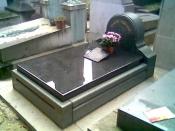Beethoven, Bach and Bartok: Comparisons
Barouque Composers Still Being Played Frequently
Monteverdi
Lully
Corelli
Pachelbel
Scarlatti
Purcell
Couperin
Albinoni
Vivaldi
Telemann
Rameau
Bach
Handel
Gluck
Baroque and Classical Orchestras - Differences
Baroque Orchestras Classical Orchestras
String section and basso continuo central to the orchestra. Other instruments are occasional additions. Standard group of four sections: strings, woodwinds, brass and percussion. Different instruments treated individually.
Fairly small; generally 10- 40 players. Larger than baroque; great variation to the numbers of players.
Flexible use of timbres, e.g. Timpani and trumpets used generally just for festive music. Standardised sections. Most sections used regularly.
Tone colour is distinctly secondary to other musical elements. Greater variety of tone colour and more rapid changes of colour.
Timbre is unimportant and therefore a piece written for harpsichord could easily be rearranged for a string section. Each section of the classical orchestra has a special role. And each instrument is used distinctively.
Wind instruments mainly used as solo instruments or as part of the basso continuo. The wind section had become a separate unit capable of contrast and distinct colour.
The harpsichord generally plays an ostinato under the orchestra. Piano not invented. The piano introduces a third colour-tone to be contrasted with the orchestra
Baroque and Classical Concerto Form- Differences
Baroque Concerto Form Classical Concerto Form
Concerto grosso (use of string orchestra set against a number of solo instruments) is the most popular concerto form of this period. Other forms include The ripieno concerto and the solo concerto. Symphony form develops from baroque concerto forms and becomes the new form.
Shorter movements than classical form. Concerto longer than baroque from.
Fairly strict structure and prerequisites, e.g. Traditional ritornello form, virtuostic displays etc. More freedom and experimentation with traditional form.
First movement has solo passages extending into long sections; alternated...



Thanks.
I love simple, direct but detailed analyses like yours beacuse it's easy to read and get what I want.
0 out of 0 people found this comment useful.